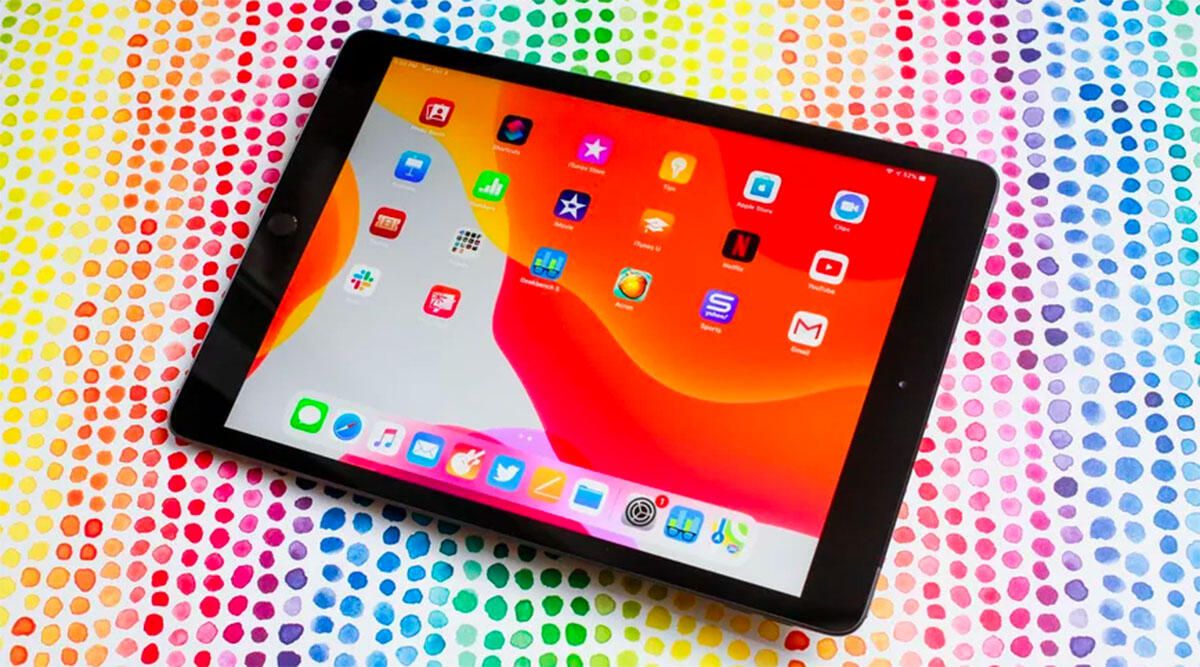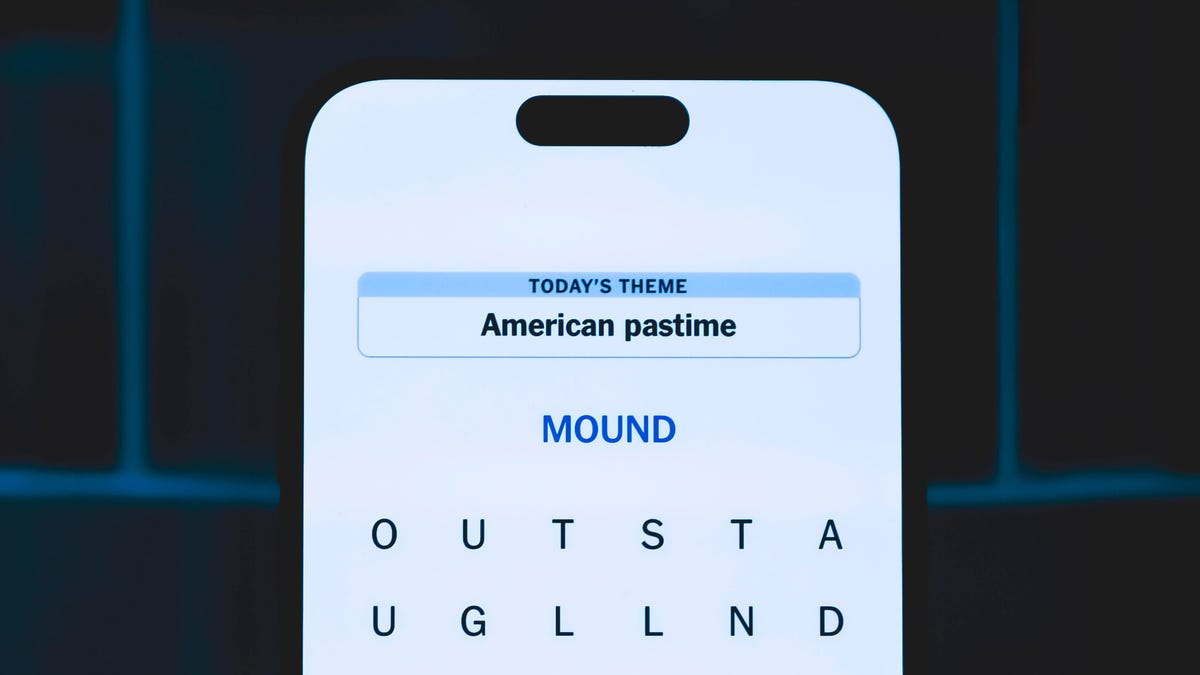Technologies
Two new iPads are coming. Here’s how to recycle your old one for your kids
You can download the iPadOS15 to give that old tablet new life. Here’s how it may come in handy for your family.

It’s official: Two new iPads are hitting the stores this Friday, Sept. 24.
Apple announced the iPad Mini and the 10.2-inch iPad at its big event last week. Both iPads come with a new high-resolution camera that includes Center Stage (a new digital zoom feature) and a few big upgrades that we’ve been anticipating. The iPad Mini comes in four new colors, has a True Tone display and supports 5G connectivity. On the other hand, the ninth-generation iPad works with the first-gen Apple pencil and other wireless keyboards. It favors the eighth-gen a lot but comes with a faster, A13 bionic chip.
If you’re shopping for a new iPad, there’s no better time. But what does that mean for your old one? Maybe sell it for some extra cash to cover the cost of the shiny, new iPad? Or you can keep it around for your kids and download iPadOS15 to give them a few of the new iPad perks for free. Even though the new iPad sounds way better, the old one can still come in handy. You can use it as a smart hub that’s similar to an Echo Show or Google Nest Hub. Or you can turn it into a new baby monitor (more below). Interested? We’ll show you how.
We also have ideas for what you can do with your old Android phone (maybe turn it into a security camera). And here’s what else was unveiled at the Apple event. There’s a new Apple Watch and the iPhone 13 is finally here with two new colors.
Turn it into a smart hub and use Apple’s HomeKit
You don’t need to buy Apple’s HomePod or HomePod Mini to put an Apple smarter speaker in your kids’ room.
You can turn your old iPad into a smart home hub that lets your kids play music, turn the lights on and off, and even control the temperature in their room with the tablet.
To turn your iPad into a smart home hub for your kids’ room:
1. On your iPad, go to Settings.
2. Scroll down, tap Home and then toggle on Use this iPad as a Home Hub.
If you want to give your kids control just over the smart-home devices in their room and not everywhere in the house, you can set limits on what they have access to in the Home app.
A smart baby monitor for much cheaper
Most baby monitors make it easy to check on your little one from your phone or computer. But they aren’t cheap. Turning your old iPad into a baby monitor can be a more affordable way to keep track of your baby.
Baby monitor apps like Cloud Baby Monitor can let you check in on your kid. You can also get motion and noise alerts, just like from popular baby monitors — the Owlet Smart Sock Plus is a popular one. Note that if you’re looking for a monitor that keeps an eye on your baby’s oxygen levels, temperature and sleep quality, an iPad won’t do that for you.
A soothing night light and sound machine
If your kids are starting to sleep on their own and you want to create a serene sleep haven for them, your old iPad is up to the task. With an app like Baby Night Lite, you can set up a night light for the kids’ room with a variety of small animals and colors along with a sound machine that comes with a variety of songs and white noise and ambient background sounds. And you can set a timer and create a playlist of peaceful, soothing music or lullabies. For older kids who are beyond lullabies and dancing sheep, an app like Night Light Lite lets you pick from a variety of sounds, such as beach waves and running water, and night light colors to help them get to sleep.
A new gaming console and features with iPadOS 15
Sony’s PS5 or the Nintendo Switch might be on your kids’ shortlist for holiday gifts. But the iPadOS15 has a few new widgets to improve gaming, including a Continue Playing feature to pick up where you left off and a widget that lets you see what games your friends are playing.
And for fun and variety, it’s hard to beat an iPad paired with Apple Arcade games, such as NBA 2K21 Arcade Edition or The Oregon Trail. And if you have more kids in the home than gaming devices, converting that old iPad into a gaming device may be just the ticket.
Plus, the iPad gives your kids a bigger screen to play multiplayer games on. And you can even add a PlayStation or Xbox wireless controller to the iPad for your kids to play without hogging the TV or your phone.
An educational tool with learning games and apps
If your kids are going to start needing the home computer for their schoolwork, turning an iPad into a dedicated educational tool may be the perfect use for your older Apple tablet. You can even pair it up with a keyboard and a mouse to make the iPad feel more like a computer. Plus, the new iPad update comes with a Split View so you can take notes and watch a video or use an app, making that old iPad even more useful.
If you’re worried about your kid becoming distracted by messages, games, alerts and social media, you can use Apple’s parental controls to set limits and what they can and can’t do on the device. You can also use Focus mode to silence any notifications, distractions and create a screen that only shows the apps you choose.
To stay ahead this school year, here are a few apps that can help your kids study, keep track of their day and take notes.
If you’re still leaning toward getting a new iPad, here’s our guide to the best iPads available right now and the big differences between them. And here are the big differences between the two new iPads if you’re debating which one to get.
Technologies
What a Ban Would Actually Mean for DJI Drone Owners and Holiday Shoppers
What’s the secret to a very un-merry shopping season? A brand new, unusable drone.

With Thanksgiving wrapped up and the Black Friday shopping sales here, if a DJI drone is on your holiday wish list, you might want to hit «buy» immediately. The company has issued a stark warning: Its drones could be banned from sale in the US, and the deadline is looming.
The Federal Communications Commission voted 3-0 at the end of October to «close loopholes» that allow tech deemed a «national security risk» to be sold in the US. In plain English, the US government is clearing the path to give DJI the same treatment it gave Chinese phone-maker Huawei, effectively banning its products from the American market.
The US government has deemed DJI, which is based in China, a security risk. It’s also considering a separate ban on TP-Link routers.
DJI is already sounding the alarm, posting on Instagram that a «deadline that could decide DJI’s fate in the US is just 43 days away» (now 19 days away). The company is warning that without an audit, its products could face an «automatic ban.» The US government has long labeled the Chinese drone maker a security risk, and it looks like the hammer might finally be coming down right before the holidays.
Don’t miss any of our unbiased tech content and lab-based reviews. Add CNET as a preferred Google source.
The vote isn’t the end of the road, however. Future bans would need to target specific products and would require a period of public consultation. But it appears the groundwork is being set for the FCC to block sales of future and some existing DJI drones from US shores, as well as products that use DJI technology.
The government has called for a DJI audit by the end of the year, but if that doesn’t happen, DJI drone products could be banned for sale by default under a national security law.
DJI asks for a security audit before any ban
A representative for DJI told CNET that while the FCC vote references a rule change that doesn’t currently apply to DJI specifically, the National Defense Authorization Act deadline in December would put Chinese companies like it on the FCC’s ban list, «without any evidence of wrongdoing or the right to appeal.»
Adam Welsh, head of global policy at DJI, said the company has repeatedly said it would be open to audit, but that «more than 10 months have now passed with no sign that the process has begun.»
«The US government has every right to strengthen national security measures, but this must go hand in hand with due process, fairness, and transparency,» Welsh said.
Welsh said DJI is urging the government to start the audit process or grant an extension.
Will DJI drone owners need to give them up?
Because the ban would apply to new sales, not drones that have already been sold, a DJI drone you already own would still be legal to use — at least under current rules.
Government agencies, however, are prohibited from purchasing or using drones from Chinese companies, including DJI.
DJI’s drones consistently rank high in their product category. In January, they dominated CNET’s list of best drones for 2025. But some of the company’s newest products, such as the DJI Mavic 4 Pro, haven’t been available for sale in the United States.
Even DJI products that are not yet banned may be hard to find. The website UAV Coach has posted a guide to the bans and reports that, due to inventory issues, most DJI drone models are sold out at retailers regardless of future FCC action.
Technologies
Today’s NYT Strands Hints, Answers and Help for Nov. 29 #636
Here are hints and answers for the NYT Strands puzzle for Nov. 29, No. 636.

Looking for the most recent Strands answer? Click here for our daily Strands hints, as well as our daily answers and hints for The New York Times Mini Crossword, Wordle, Connections and Connections: Sports Edition puzzles.
Today’s NYT Strands puzzle is a real puzzler. Some of the answers are difficult to unscramble, so if you need hints and answers, read on.
I go into depth about the rules for Strands in this story.
If you’re looking for today’s Wordle, Connections and Mini Crossword answers, you can visit CNET’s NYT puzzle hints page.
Read more: NYT Connections Turns 1: These Are the 5 Toughest Puzzles So Far
Hint for today’s Strands puzzle
Today’s Strands theme is: What a piece of work!
If that doesn’t help you, here’s a clue: You can build it in a shop.
Clue words to unlock in-game hints
Your goal is to find hidden words that fit the puzzle’s theme. If you’re stuck, find any words you can. Every time you find three words of four letters or more, Strands will reveal one of the theme words. These are the words I used to get those hints but any words of four or more letters that you find will work:
- CREW, REAM, LANE, WHEE, DELL, CANE, PULL, REVEL
Answers for today’s Strands puzzle
These are the answers that tie into the theme. The goal of the puzzle is to find them all, including the spangram, a theme word that reaches from one side of the puzzle to the other. When you have all of them (I originally thought there were always eight but learned that the number can vary), every letter on the board will be used. Here are the nonspangram answers:
- WHEEL, AXLE, LEVER, WEDGE, PLANE, PULLEY, SCREW
Today’s Strands spangram
Today’s Strands spangram is SIMPLEMACHINE. To find it, start with the S that’s three letters to the right on the top row, and wind over and down.
Technologies
Today’s NYT Connections Hints, Answers and Help for Nov. 29, #902
Here are some hints and the answers for the NYT Connections puzzle for Nov. 29, #902.

Looking for the most recent Connections answers? Click here for today’s Connections hints, as well as our daily answers and hints for The New York Times Mini Crossword, Wordle, Connections: Sports Edition and Strands puzzles.
Today’s NYT Connections puzzle is tough. If you need help sorting them into groups, you’re in the right place. Read on for clues and today’s Connections answers.
The Times now has a Connections Bot, like the one for Wordle. Go there after you play to receive a numeric score and to have the program analyze your answers. Players who are registered with the Times Games section can now nerd out by following their progress, including the number of puzzles completed, win rate, number of times they nabbed a perfect score and their win streak.
Read more: Hints, Tips and Strategies to Help You Win at NYT Connections Every Time
Hints for today’s Connections groups
Here are four hints for the groupings in today’s Connections puzzle, ranked from the easiest yellow group to the tough (and sometimes bizarre) purple group.
Yellow group hint: Middle of the body.
Green group hint: Fill-in.
Blue group hint: Nice place to hang out.
Purple group hint: Card game.
Answers for today’s Connections groups
Yellow group: Abdominal area.
Green group: Replacement.
Blue group: Park staples.
Purple group: Blackjack terms.
Read more: Wordle Cheat Sheet: Here Are the Most Popular Letters Used in English Words
What are today’s Connections answers?
The yellow words in today’s Connections
The theme is abdominal area. The four answers are core, midsection, torso and trunk.
The green words in today’s Connections
The theme is replacement. The four answers are backup, cover, relief and substitute.
The blue words in today’s Connections
The theme is park staples. The four answers are bench, pigeon, statue and tree.
The purple words in today’s Connections
The theme is blackjack terms. The four answers are bust, hit, split and stand.
-

 Technologies3 года ago
Technologies3 года agoTech Companies Need to Be Held Accountable for Security, Experts Say
-

 Technologies3 года ago
Technologies3 года agoBest Handheld Game Console in 2023
-

 Technologies3 года ago
Technologies3 года agoTighten Up Your VR Game With the Best Head Straps for Quest 2
-

 Technologies4 года ago
Technologies4 года agoBlack Friday 2021: The best deals on TVs, headphones, kitchenware, and more
-

 Technologies4 года ago
Technologies4 года agoVerum, Wickr and Threema: next generation secured messengers
-

 Technologies4 года ago
Technologies4 года agoGoogle to require vaccinations as Silicon Valley rethinks return-to-office policies
-

 Technologies4 года ago
Technologies4 года agoOlivia Harlan Dekker for Verum Messenger
-

 Technologies4 года ago
Technologies4 года agoiPhone 13 event: How to watch Apple’s big announcement tomorrow
